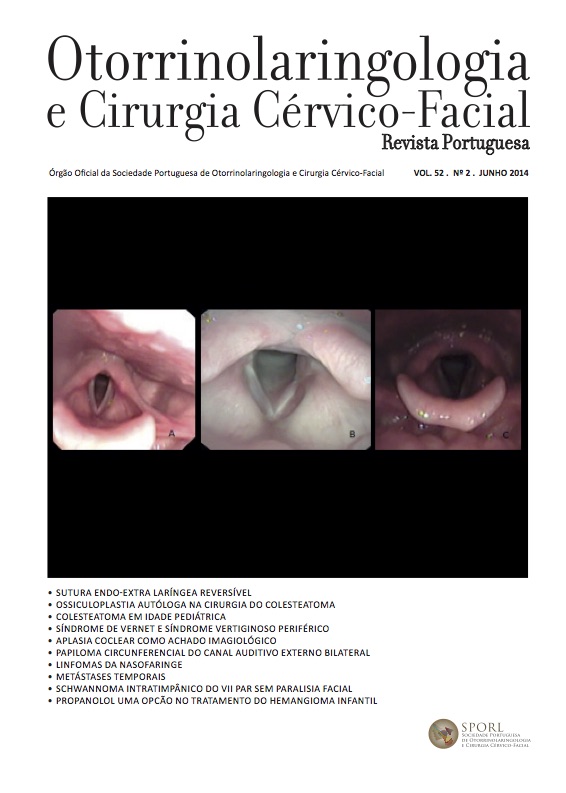Cochlear aplasia as an imagiological finding
DOI:
https://doi.org/10.34631/sporl.461Keywords:
congenital hearing loss, cochlear aplasiaAbstract
The authors present a clinical case of congenital hearing loss due to cochlear aplasia diagnosed at 58 years old, as a imagiological finding during the study of a chronic otitis media. Cochlear aplasia is a rare congenital malformation that represents only 3% of cochlear malformations. It is characterized by the complete absence of the cochlea, with the presence of remnants of the vestibule and semicircular canals. It is to emphasize the importance of attentive taking of medical history, suspicion and investigation of the cause of deafness, even when this can be explained by another recognized condition.
Downloads
References
Estivill X, Fortina P, Surrey S, Rabionet R, et al. Connexin-26 mutations in sporadic and inherited sensorineural deafness.
Lancet. 1998 Feb;351(9100):394-8.
Jun AI, McGuirt WT, Hinojosa R, Green GE, et al. Temporal bone histopathology in connexin 26-related hearing loss.
Laryngoscope. 2000 Feb;110(2 Pt 1):269-75.
Lefebre PP, Van de Water TR: Connexins, hearing and deafness: clinical aspects of mutations in the connexin 26
gene. Brain Res Rev. Apr;32(1):159-62. 2000.
Park HJ, Hahn SH, Chun YM, Park K, et al: Connexin26 mutations associated with nonsyndromic hearing loss. Laryngoscope. 2000 Sept;(110):1535-1538.
Morton N. Genetic epidemiology of hearing impairment. Ann N Y Acad Sci. 1991 630: 16-31.
Park AH, Kou B, Hotaling A, Azar-Kia B, et al. Clinical course of pediatric congenital inner ear malformations. Laryngoscope.
Oct (110):1715-1719.
Holley M. Congenital deafness. A difficult organ to work with. Lancet. 2001 Dec;358 Suppl:S15.
Primignani P, Trotta L, Castorina P, Lalatta F, et al. A new de novo missense mutation in connexin 26 in a sporadic case of nonsyndromic deafness. Laryngoscope. 2007 May;117(5):821-4.






